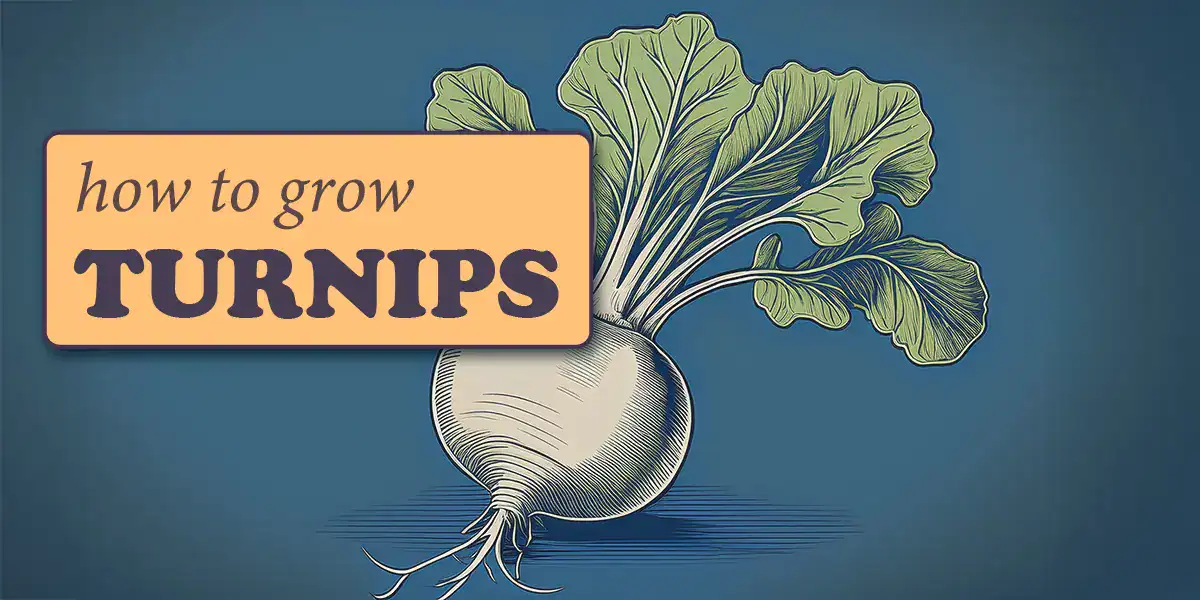What do you get when you cross a carrot with a radish?
It might be the turnip, a slightly bitter and peppery root vegetable that ruled European stew pots until the sweeter and prettier carrot came along.
Did you know that turnips:
- Pack more vitamin C than carrots to boost immune function and skin health?
- Contain fewer calories and carbs than carrots?
- Lend a unique, pungent flavor to dishes when roasted, mashed, or added to soups and stews?
- Can be enjoyed cooked or raw?
Keto crusaders, embrace the humble turnip in your garden and kitchen. Turnips may not be as flashy as tomatoes or as sexy as Romanesco. Still, these hardy root vegetables are nutritious and fast-growing, and they offer a dual harvest of tender greens and flavorful roots.
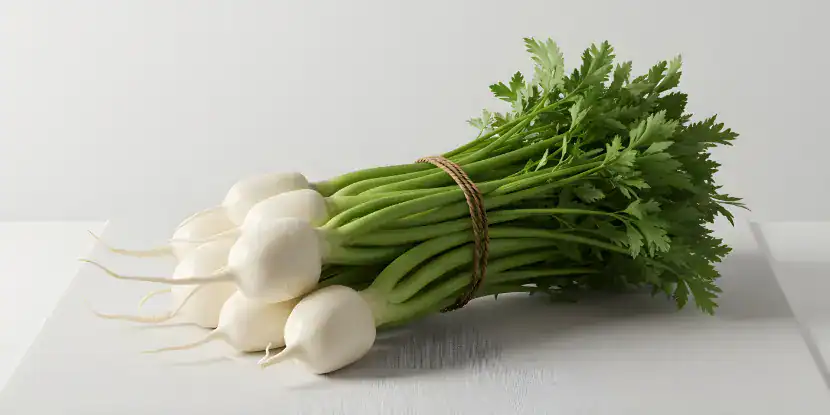
Turnip greens are every bit as valuable — and edible — as the roots.
“Roots” of the Turnip
Turnips, Brassica rapa, have been cultivated for over 4,000 years. This versatile vegetable originated in Europe and Asia and has been a dietary staple across many cultures due to its adaptability.
Historically, turnips were used both as a food source and animal fodder. Today, they’re recognized for their health benefits, providing a rich source of vitamin C, fiber, and antioxidants.
Popular Turnip Varieties
- Hakurei: This Japanese variety has small, white, and tender roots with a sweet, mild flavor. Hakurei turnips mature in about 38 days, making them suitable for multiple plantings throughout the cooler seasons.
- Purple Top White Globe: This classic, slightly spicy heirloom variety features a purple upper half and a white lower half. It’s widely grown in California and matures in approximately 50 to 70 days.
- Tokyo Cross: An award-winning hybrid, Tokyo Cross produces smooth, white, globe-shaped roots with a crisp texture and mild flavor. It matures rapidly in about 30 to 35 days and performs well in garden beds and containers.
- Seven Top (Southern Prize): Unlike other varieties, Seven Top is cultivated primarily for its lush, tender, flavorful greens rather than its roots. This variety is often featured in Southern cuisine.
Growing Conditions
Light
- Turnips prefer full sun but can tolerate partial shade.
- Aim for 6+ hours of sunlight daily, especially for root development.
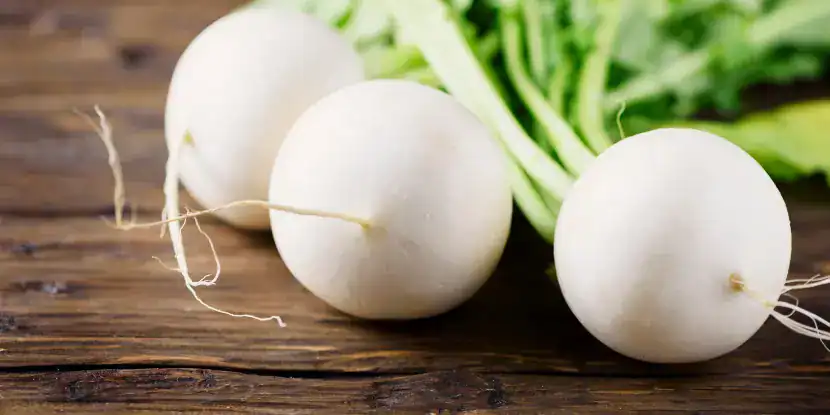
Hakurei turnips have small, white, and tender roots with a sweet, mild flavor.
Temperature
- Turnips are a cool-season crop, ideally grown between 40°F and 75°F.
- They perform poorly in extreme heat, making spring and fall the best growing times in Southern California.
Soil
- Turnips need loose, well-drained soil rich in organic matter.
- Adjust soil pH levels to 6.0–6.8.
When to Plant in Southern California
Southern California’s mild winters make it possible to grow turnips almost year-round. However, they perform best in cooler months.
- Spring Planting: Once the soil is workable, direct seed in early spring, around February or March.
- Fall Planting: Sow seeds for a fall harvest in late September to November.
Temperatures rarely dip too low in winter, making fall planting especially productive.
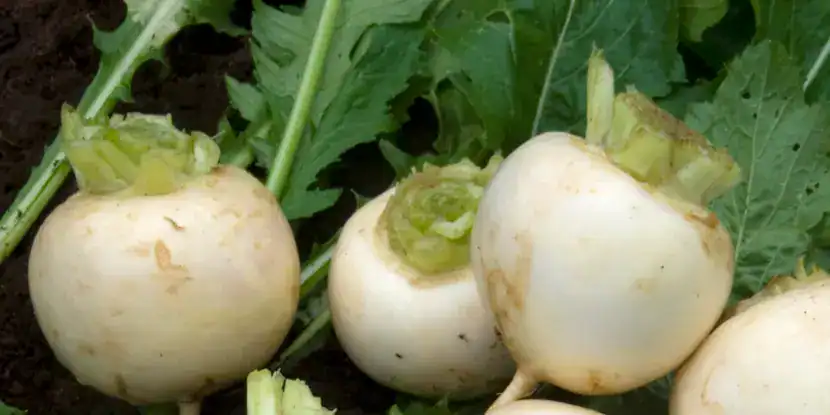
Tokyo Cross turnips produce smooth, white, globe-shaped roots with a crisp texture and mild flavor.
Steps for Planting Turnips from Seed
- Loosen the soil to a depth of 12 inches. Remove any stones or debris to allow roots to grow without obstruction.
- Mix in compost or aged manure for added nutrients.
- Plant turnip seeds 1/4 inch deep and space them about 1–2 inches apart.
- Rows should be spaced 12–18 inches apart for air circulation.
- Lightly moisten the soil after sowing. Avoid overwatering.
- Once seedlings are about 2–3 inches tall, thin them to 3–4 inches apart.
- Apply a thin layer of mulch to retain moisture and suppress weeds.
Turnip Plant Care
Water
- Turnips thrive in consistently moist soil.
- 1 inch of water per week is optimal, depending on rainfall.
- Avoid overwatering, which causes root rot.
Fertilizer
Turnips aren’t heavy feeders, but can benefit from organic fertilizer or compost.
- Apply fertilizer before planting or in the early stages of growth.
- Follow package instructions for the amount and frequency of application.
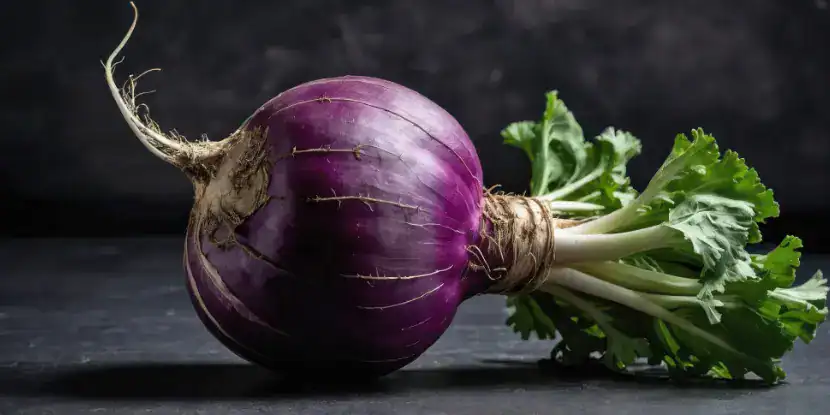
This purple turnip looks almost like a beet but has a sharper, slightly peppery flavor.
Pests & Diseases
- Pests: Flea beetles and aphids are common. Use floating row covers for protection.
- Diseases: Clubroot and downy mildew can occur in wet or poorly drained soil. Rotate your crops annually and ensure your soil has proper drainage.
Companion Planting
- Plant turnips alongside companions like peas, radishes, or spinach, which help maximize space and ward off pests.
- Avoid growing turnips near potatoes, which compete for nutrients in the soil.
When to Harvest
Depending on the variety, turnips are typically ready for harvest within 35–60 days after planting.
- Roots: Harvest when they’re about 2–3 inches in diameter for the best flavor. Larger turnips can become woody.
- Greens: You can start cutting outer leaves when they’re 4 inches tall. Leave some foliage for continued growth.
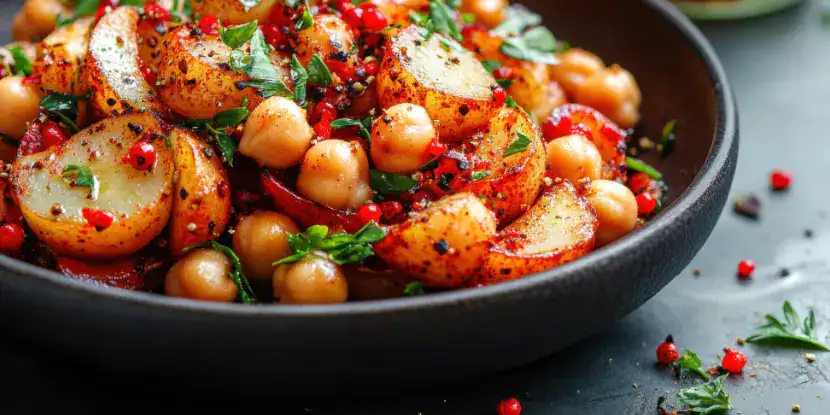
A delicious potato, chickpea, and turnip green salad. Try it at home!
Using Turnips in the Kitchen
With their earthy, slightly sweet flavor, turnips pair well with ingredients like butter, thyme, and roasted anything.
Roots
- Roasted with olive oil and herbs
- Mashed as a low-carb alternative to potatoes
- Shredded into slaws or salads
Greens
- Sautéed with garlic and chili flakes
- Added to soups or stews
- Blended into smoothies for a nutrient boost
FAQs: Growing Turnips
Q: How long does it take to grow turnips from seed?
Depending on the variety and growing conditions, turnips usually take 35–60 days to mature.
Q: Can turnips be grown in containers?
Yes! Use a container at least 12 inches deep to allow for root growth.
Q: When is the best time to water turnips?
Early morning is the best time, as it allows moisture to absorb before the day’s heat.
Q: Can I eat turnip greens?
Turnip greens are nutritious and delicious, with a slightly peppery flavor. Try them stir-fried or in salads.
Q: Why aren’t my turnips forming roots?
Compacted soil, too much nitrogen, or inadequate thinning can lead to poor root development.
Q: Do turnips need full sun?
They prefer full sun, but partial shade may be sufficient in hotter climates.
Q: How do I store harvested turnips?
Store roots in a cool, dark place for several weeks. Refrigerate greens and use them within a few days.
8. What’s the easiest variety of turnip for beginners?
The popular Purple Top White Globe is beginner-friendly and reliable in most climates.

